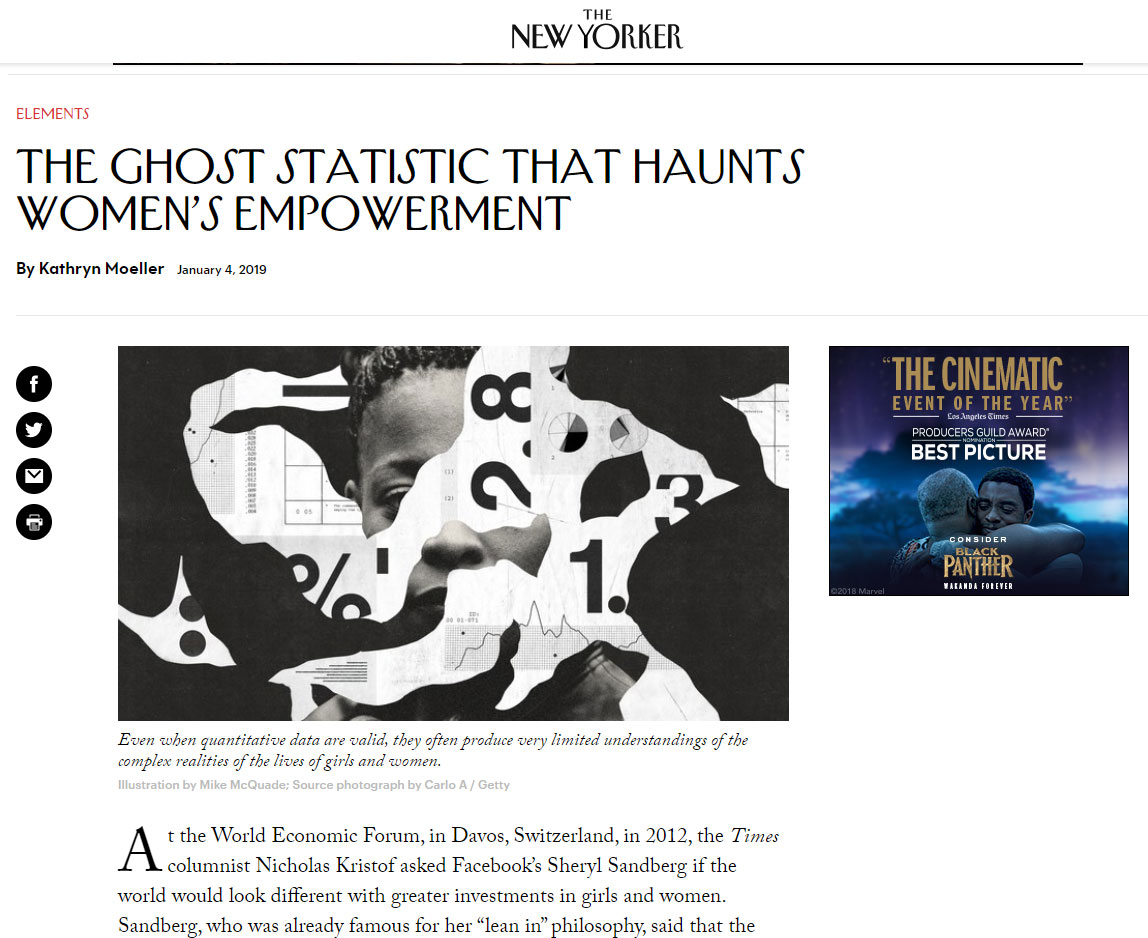At the World Economic Forum, in Davos, Switzerland, in 2012, the Times columnist Nicholas Kristof asked Facebook’s Sheryl Sandberg if the world would look different with greater investments in girls and women. Sandberg, who was already famous for her “lean in” philosophy, said that the world would indeed look different. She explained, “The data is pretty clear that women spend ninety per cent of their income on their children. And men, I think it’s more like forty per cent.” She turned to the former Chilean President Michelle Bachelet, then the executive director of U.N. Women, who corrected her estimation. Sandberg clarified: men spend “thirty to forty per cent.”
Over the years, I came across this statistic, again and again, on the Web sites and in the policy documents of the most powerful global development organizations, including the World Bank and United Nations agencies. It is often cited as the key piece of evidence that investing in poor girls and women in Asia, Africa, and Latin America creates a high rate of return. They will supposedly marry later and delay childbearing, and, in doing so, generate economic development, limit population growth, educate their children, improve children’s and women’s health, conserve environmental resources, and control the spread of H.I.V. They will end the so-called cycle of poverty in which individuals, families, communities, and nations get caught.
This story was popularized by the Nike Foundation’s viral Girl Effect videos and written into best-selling books, such as Kristof and Sheryl WuDunn’s “Half the Sky” and Greg Mortenson’s now discredited “Three Cups of Tea.” Beyond simply capturing audiences, the idea underlying this statistic has influenced development policies and programs from Liberia to Afghanistan. Development institutions such as the United States Agency for International Development, the Gates Foundation, and international N.G.O.s like care have taken up this view of girls and women as the most responsible economic actors in the household, and have integrated it into their programs on the grounds of both equity and efficiency. (The flip side of this idea is that “third world” men create little value for development, by spending their money on “whiskey and other women,” as Sandberg put it at Davos.)
...


